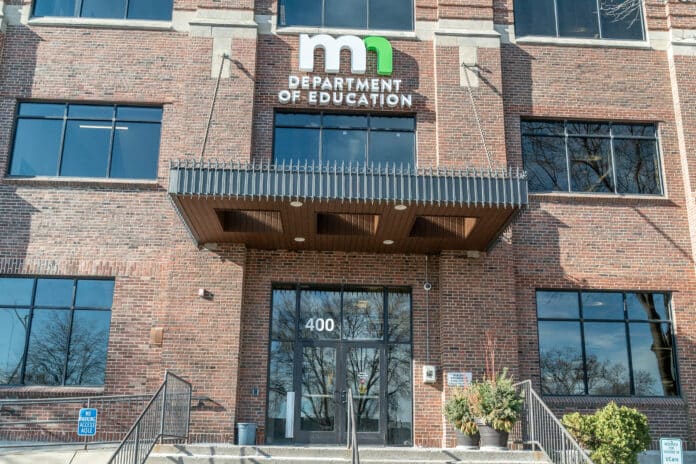(Center of the American Experiment) — Starting this fall for the 2025-26 school year, Minnesota’s public schools will be required to teach third graders how to use non-binary gender pronouns in writing sentences.
The Minnesota Department of Education’s new K-12 English Language Arts (ELA) standards and benchmarks were adopted in 2023 and are scheduled for full implementation at the beginning of the 2025-26 school year. Reviewed and revised on a 10-year cycle, Minnesota’s ELA standards and benchmarks are organized into three strands: 1) reading, 2) writing, and 3) listening, speaking, viewing, and exchanging ideas.
Under the writing strand, a third-grade benchmark requires students to “use nouns (collective and irregular plural), verbs, frequently used adjectives and adverbs, conjunctions, prepositions, and pronouns (including reflexive pronouns and male, female and non-binary gender pronouns) [emphasis added] in simple and compound sentences authentically in writing.” (3.2.1.3)

According to state statutes, K-12 benchmarks identify the “specific knowledge or skill that a student must master to complete part of an academic standard by the end of the grade level or grade band.”
The third-grade benchmark is the only reference to “non-binary gender pronouns” in the standards and benchmarks. Other benchmarks require students to use pronouns in writing, noting that they will “buil[d] on skills from previous years.”
Students will be tested on these new ELA standards spring 2026, when the MCA-IV is first administered.
As of spring 2024 MCA-III results on the reading assessment, which tested students in grades 3-8 and 10 on mastery of the 2010 ELA standards and benchmarks currently being taught, 49.7 percent of students met grade-level proficiency. Among third graders, 46.3 percent met grade-level reading standards and benchmarks, down from 47.1 percent in 2023 and 47.8 percent in 2022.
The Minnesota Legislature overhauled the state’s approach to literacy during the 2023 legislative session by passing the READ Act, requiring teacher preparation programs, districts, and teachers to use evidence-based reading instruction to try and help turn around the state’s long-term literacy struggles. The conditions of the READ Act are still being rolled out, as teachers continue completing professional development and training programs, and schools continue sorting out curriculum changes and writing literacy plans, to name a few.
This article was originally published by the Center of the American Experiment.
Catrin Wigfall
Catrin Wigfall is a Policy Fellow at Center of the American Experiment.
Catrin’s experience in education and policy research began during her time with the Young Leaders Program at The Heritage Foundation. Her interest in education policy led her to spend two years teaching 5th grade general education and 6th grade Latin in Arizona as a Teach for America corps member. She then used her classroom experience to transition back into education policy work at the California Policy Center before joining American Experiment in February 2017.
Catrin graduated summa cum laude from Azusa Pacific University in California, where she earned a Bachelor of Arts degree in Political Science.


















